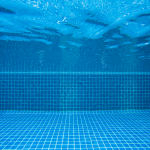How to Extend Your Chlorine Supply
As it seems we are finally rounding the corner with regards to the pandemic, there is a parallel fall out affecting the pool industry. Due to high demand during the pandemic with more homeowners installing and using their pools for longer periods of time, as well as a chemical plant fire at one of the chlorine manufacturers in the US, chlorine tablet stock has nearly been depleted. So, what is a pool owner to do when they can’t get tablets?
PREVENT
Tri-chlor tablets have cyanuric acid, aka stabilizer, built into them to help prevent chlorine depletion from UV rays. Essentially, stabilizer is sunscreen for chlorine. So, we want to take a preventative effort to help the chlorine levels to remain steady. With chlorine, the more demand the harder your chlorine has to work and gets depleted. To keep chlorine demand low, you want to enforce a shower before swimming policy. This will ensure bathers aren’t bringing waste into the pool in forms of cosmetics, sunscreen, personal body products, sweat, urine and other organic waste into the pool which will cause your chlorine to work on overload. If you allow your pets to use the pool, you may want to consider holding off on that until chlorine inventory is available. You should also test your water chemistry frequently in an effort to ensure your chlorine levels don’t change drastically requiring more chlorine usage sooner than needed.
PRESERVE
Although it may not be the best option on your wallet, consider longer system runs to ensure your water is circulating more frequently. Residential pools typically run anywhere between 8-12 hours a day. If you have a variable speed pump, you can run it at lesser level to keep the water movement going strong. You can also consider a cover to prevent UV rays from penetrating the pool water. Non-winter safety covers can include automated covers or solar blankets. Also, when you need to shock, you can use either liquid chlorine, calcium hypochlorite, or non-chlorine shocks. Then, you can add cyanuric acid on its own.
PRE-EMPT
There are additional systems for pools that can replace your tablet usage. This includes salt chlorine generation systems, erosion feeders, and supplemental systems. A salt chlorine generation system produces chlorine on site through an electrolytic cell installed in your filtration system. Erosion feeders can be used for calcium hypochlorite tablets. Supplemental systems, such as an ultra-violet (UV) or ozone help pools with sanitizing and oxidizing, decreasing the chlorine demand.
PLAN
The bottom line is you want to plan ahead for the chlorine shortage. Inventory is low and limited, so if you wait too long, you may have no options available to maintain proper chlorine levels in your pool to ensure that your swimmers have a safe and healthy swim season.






